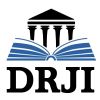New techniques applied to post-earthquake assessment of buildings
Abstract
After a strong earthquake the damage in the affected area can be so extended that it is not possible to make all building evaluations only by expert engineers. It is common the tendency of non-expert inspectors to aggravate or to underestimate the real level of damage. But, due to the fact that the damage levels are usually linguistic qualifications such as light, minor, moderate, average, severe, etc., an expert system implemented in a computer for post-earthquake evaluation of
building damage has been developed using an artificial neural network and fuzzy sets technique. This expert system allows performing the building damage evaluation by non-experts that participate in a massive survey of buildings. The model considers different possible damages in structural and architectural elements and potential site seismic effects in the ground. It takes also into account the pre-existing conditions that can make the building more vulnerable, such as the quality of construction materials, plant and height irregularities and bad structural configurations. The system makes decisions about the building habitability and reparability applying fuzzy rule bases to the available building information.
The global level of the building damage is estimated taking into account the structural and non-structural damage. The global building state is determined adding the rule base on ground conditions, obtaining thus the habitability of the building. The building reparability also depends on other fuzzy rule base: the preexistent conditions. Thus, the expert system aids to make decisions on habitability
and reparability of each building that are basic in the emergency response phase after the occurrence of a strong earthquake.
Full Text:
PDFReferences
RodrÃguez, M. y Castrillón, E., Instituto Nacional de IngenierÃa UNAM. Manual de Evaluación PostsÃsmica de la Seguridad Estructural de Edificaciones. Basado en investigaciones Realizadas para el Departamento del Distrito Federal. Series del Instituto de IngenierÃa 569, 1995
Sociedad Mexicana de IngenierÃa SÃsmica. A.C. Secretaria de Obras y Servicios Gobierno del Distrito Federal. Manual de Evaluación PostsÃsmica de la Seguridad Estructural de Edificaciones, 1998
Centro Nacional de Prevención de Desastres (CENAPRED). Norma para la Evaluación del Nivel de Daño por Sismo en Estructuras y GuÃa Técnica de Rehabilitación (Estructuras de Concreto Reforzado). Cuadernos de Investigación, Número 37, México, 1996
Applied Technology Council, Procedures for postearthquake safety evaluation of buildings, ATC-20, Redwood City, CA, 1989
Goretti A., Post-earthquake building usability: a Assessment. Technical Report SSN/RT/01/03, 2001.
Instituto de IngenierÃa SÃsmica y SismologÃa, IZIIS, MetodologÃa y Procedimiento para la Evaluación de Daños Producidos por Terremotos. Universidad “Kiril y Metodij†– Skopje, Yugoslavia, 1984.
Campos, A., Memoria Técnica del Censo de Inmuebles Afectados por el Sismo del 25 de Enero de 1999 en El Eje Cafetero, Ministerio de Desarrollo Económico, Bogotá D.C., Colombia, 1999
AIS, Asociación Colombiana de IngenierÃa SÃsmica, GuÃa Técnica para Inspección de Edificaciones Después de un SÃsmo. Manual de Campo, Bogotá, D.C., Colombia, 2002
AIS, Asociación Colombiana de IngenierÃa SÃsmica, Manual de Campo para Inspección de Edificios Después de un SÃsmo. Manizales, Colombia, 2003
Applied Technology Council, Earthquake damage evaluation data for California, ATC-13, Redwood City, CA, 1985
Park Y.J., Ang A. and Wen Y., Seismic Damage Analysis and Damage-Limiting Design of R.C. Buildings. Structural Research Series, Report No 516, University of Illinois at Urban- Champaign, Urbana, 1984
FEMA, Federal Emergency Management Agency, Earthquake Loss Estimation Methodology HAZUS, Technical Manual, Vol I, II and III, First edition 1997, National Institute of Buildings Sciences of Federal Emergency Management Agency, Washington, 1999
Sanchez-Silva, M. and GarcÃa, L. Earthquake Damage Assessment Based on Fuzzy Logic and Neural Networks. EERI Earthquake Spectra, Vol. 17, N. 1, February, pp. 89-112. Oakland, California, 2001.
Stone, W.C., Taylor, A.W, Seismic Performance of Circular Bridge Columns Designed in Accordance with AASHTO/CALTRANS standards, NIST Building Science Series 170, National Institute of Standards and Technology, Gaithersburg MD, 1993.
Refbacks
- There are currently no refbacks.
Copyright (c) 2015 INTERSECTII / INTERSECTIONS
Indexed

